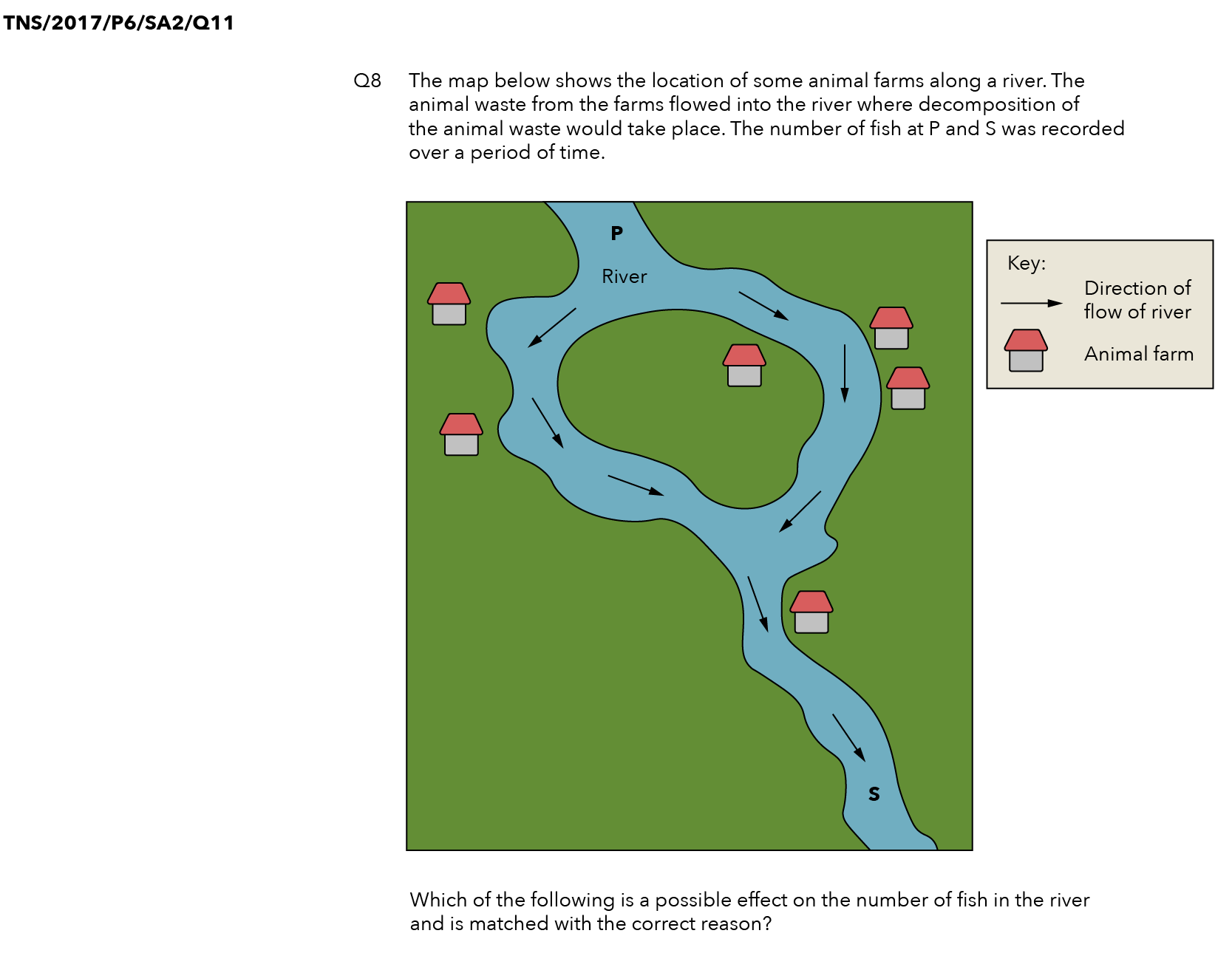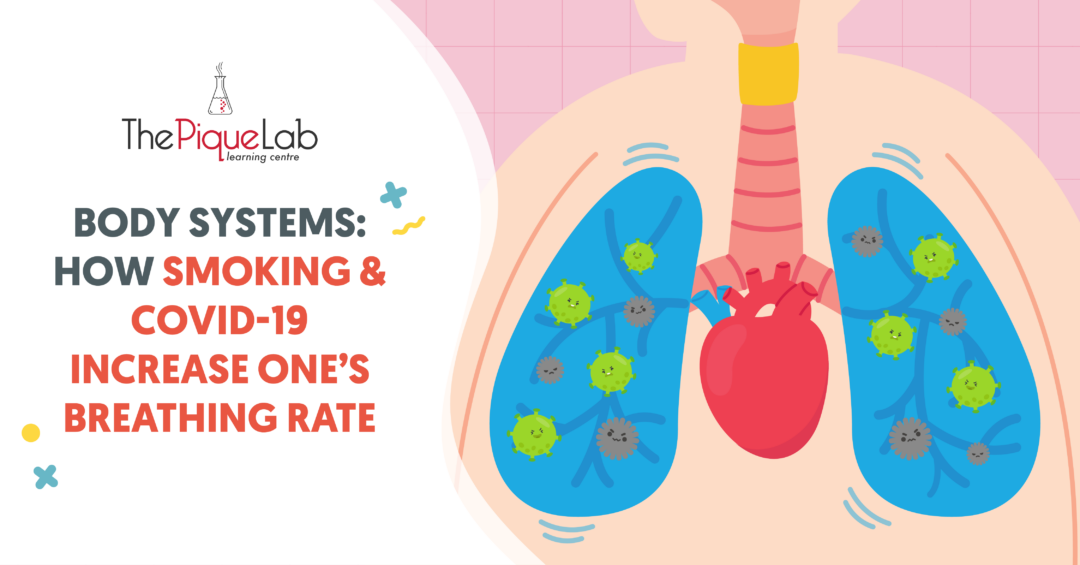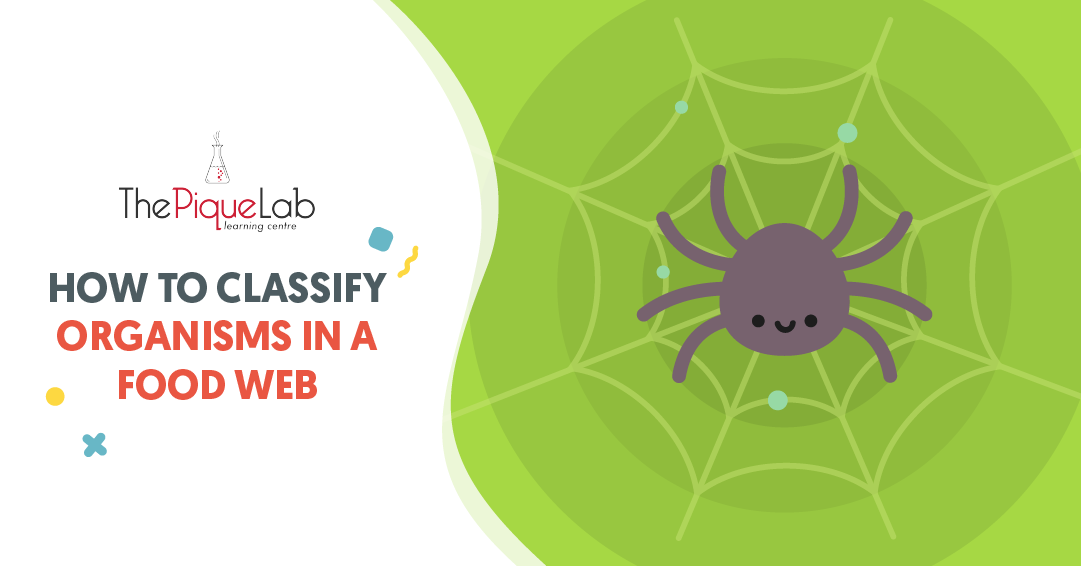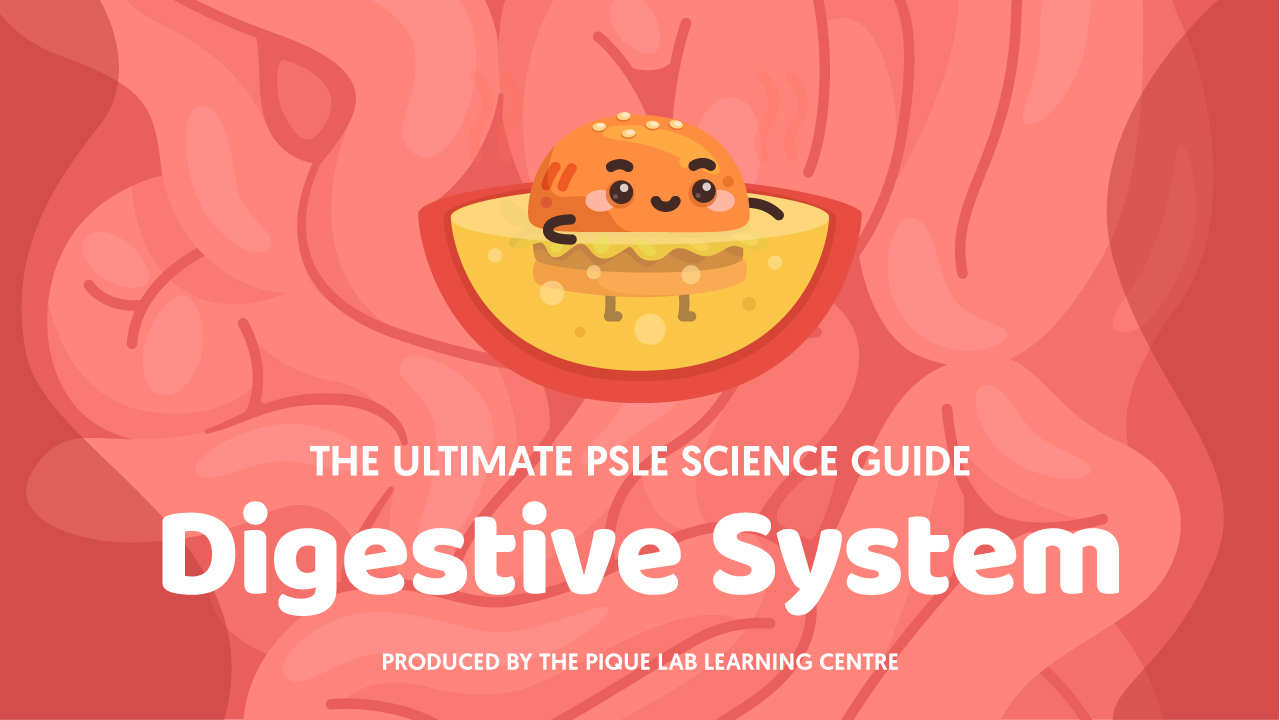Introduction
You may notice that the concept of decomposition is frequently mentioned in the topic of Man’s Impact on the Environment. Besides knowing the definition of the term, you need to be very familiar with how it can be tested in application questions where you will need to identify the different organisms affected by the process and how they are affected!
To help you understand this, I will be analysing an examination question on decomposition from the topic of Man’s Impact on the Environment from the 2017 Tao Nan School (TNS) P6 SA2 Examination Paper.
Read Also:
Let’s Take A Look At This Question

Source: Tao Nan School (TNS) – 2014 P6 SA2 Examination Paper [Q33]
Thought Process
What is the difference between point P and point S? If we look at point P, it is the part of the river where the water is flowing before it passes through the animal farms.
What about point S? Point S is the part of the river after it has flowed past the animal farms.
Essentially, the question is asking us what happens when the waste from the animal farms decomposes and enters the river. Let’s take a look at the first option:
More Fishes At S Than At P: More Nutrients For Fish At S
First of all, let’s identify where these nutrients are coming from. Remember that we mentioned that animal waste was being released into the river. After that, the question also mentioned that the animal waste would decompose.
What happens when the animal waste decomposes?
🐟 What Happens During Decomposition? 🐟
During decomposition, waste is broken down into simpler substances, which could return to the river as nutrients.
Do the fish take in nutrients given out by the animal waste?
No, this is not true! The fish does not feed on animal waste to obtain nutrients.
In this case, it’s not about having more nutrients. It’s about the fact that the fish does not take in nutrients from the decomposed animal waste. So this is not a possible reason why there will be more fish at S than at P.
Before we move on, who do you think would benefit from these extra nutrients in the water?
The answer is plants! Plants in the river, if there are any, could take in these dissolved nutrients in the water, helping them grow better.

Let’s move on to option (2).
Fewer Fishes At S Than At P: More Bacteria Would Compete With Fish For Dissolved Oxygen At S
Is it true that there will be more bacteria?
Going back to the question earlier, it boils down to the process of decomposition again.
Decomposition is carried out by decomposers — fungi and bacteria. Because of the increase in the amount of animal waste, there will be more decomposition taking place.
Would there be more or less bacteria in the water?
There will be more bacteria in the water! Bacteria is also a living thing, and how do living things survive?
They need to carry out a process called respiration to release energy. So with more bacteria, it means they would also carry out more respiration.
🌬 Two Things Needed To Carry Out Respiration 🌬
1️⃣ Food (Which bacteria obtain from the animal waste)
2️⃣ Oxygen (Because there are more bacteria, they would take in more oxygen)
And does this cause more competition for oxygen with the fish? Yes, it does!
They will then take in less oxygen for a slower rate of respiration and the population of the fish will decrease.

You may see fewer fish at S as compared to P. So, option (2) is possible.
However, let’s take a look at the last two options to confirm our answer. I encourage you to continue reading this blog post so that you can learn the thought processes behind the other two options and understand why they are not accepted as the correct answer.
Let’s take a look at option (3).
More Fishes At S Than P: Decomposition Produced Carbon Dioxide From Fish At S
Does decomposition produce carbon dioxide? Yes, it does.
However, does the fish require carbon dioxide?
No, the fish carries out respiration for energy, and as we mentioned earlier, what is the gas required for respiration? It is oxygen, not carbon dioxide! Even though decomposition produces carbon dioxide, it is not for the fish. So, we will not see more fish at S because of this reason. Hence, option (3) is incorrect.
Let’s take a look at option (4).
Fewer Fishes At S Than P: Bacteria Feed On Fish At S
While bacteria can grow on living things, dead or alive, to break them down into simple substances and feed on them, we cannot agree with this option.
While it may be possible that some bacteria can be found on the fish, it is unlikely that the bacteria will feed on the fish and cause a significant decrease in the number of fish.
It is more likely that there are more bacteria to compete with the fish for oxygen, rather than the bacteria themselves feeding on the fish to cause a decrease.
So, we will not choose option (4) as the answer.
In this case, the best answer to this question will be option (2).
Suggested Answer
Option (2).
Conclusion
After reading this article, I hope that you have become more familiar with what happens during decomposition and how different organisms are involved during the process.
Stay tuned for our upcoming articles on how to tackle other tricky Science questions!

If you like our methodology, we've some upcoming workshops:







